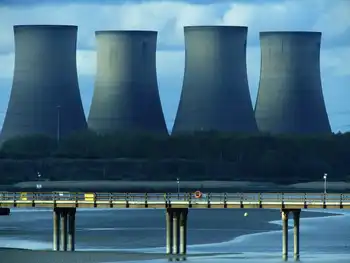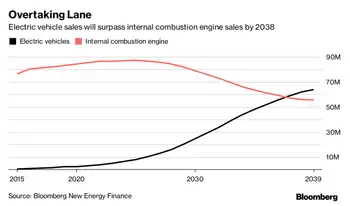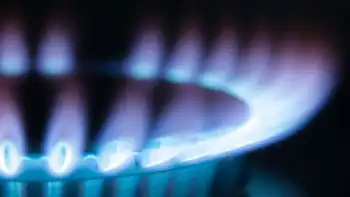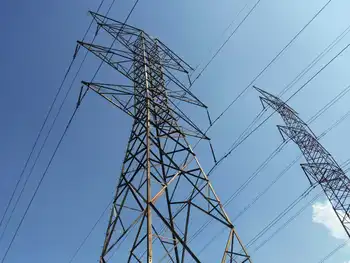Large fuel cells need U.S. aid to survive
By Washington Times
NFPA 70b Training - Electrical Maintenance
Our customized live online or in‑person group training can be delivered to your staff at your location.

- Live Online
- 12 hours Instructor-led
- Group Training Available
Stationary fuel cells are on-site power generators that emit almost no pollutants while producing energy. They are powerful enough to supply electricity, heating and air conditioning for a 1,000-room hotel, a 33,000-student college campus or large industrial structures such as the Pepperidge Farm plant in Connecticut and Sierra Nevada brewery in California.
The energy source is pricey, though, ranging in the millions of dollars per unit. Yet demand for the fuel cells in Japan and South Korea far outstrips domestic supply, partly because foreign governments provide tax incentives or subsidies to companies that import and use the stationary fuel cells.
"We need legislation with provisions to promote deployment of fuel cells," said Bill Foster, vice president of government business development for FuelCell Energy Inc., the world's largest manufacturer of stationary fuel cells.
Mr. Foster said that including the industry among the many "green" technologies being supported by the federal government is critical to keeping jobs in the U.S. and ramping up the use of this clean energy supply. The Obama administration's main fuel cells focus has been on cars and buses, largely overlooking the stationary sources.
UTC Power, a division of United Technologies Corp. that manufactures stationary fuel cells, said the industry "needs the government to become a customer."
"We need volume, we need customers, and I think the government could become a large consumer," said Michael Brown, vice president of government affairs and general counsel to UTC. "To have the government step up and say, 'We're going to buy 500 fuel cells a year' would jump-start the marketplace."
Mr. Foster said that his Danbury, Connecticut-based company is working with Congress for special attention in upcoming bills. He asserts that allowing more energy from fuel cells to be counted as part of a federal renewable-electricity standard (RES) would also promote wider use. The standard is part of pending energy legislation and would mandate that a certain percentage of the nation's energy come from clean sources by a certain date. The proposed RES would only allow fuel-cell energy generated from qualified biofuel sources — not natural gas — to contribute to the standard.
In the meantime, in the absence of federal legislation to drive fuel-cell use, some states are using the federal Investment Tax Credit to promote the use of stationary fuel cells. California and Connecticut also have incentive programs that when coupled with the federal tax credit have helped expand the use of stationary fuel cells.
Mr. Brown said additional incentives and partnerships with energy companies and utilities also would benefit the young industry.
The industry is also targeting Connecticut lawmakers in Congress to include fuel-cell provisions in federal legislation. Mr. Foster said Democratic Rep. Christopher S. Murphy and Democratic Rep. John B. Larson have been fuel-cell champions because FuelCell Energy Inc. and UTC Power both have their headquarters in Connecticut.
Although the technology is commercially viable, it is still relatively unknown, posing a major roadblock for the industry, the industry asserts.
Stationary fuel cells range in size, with some measuring about one-fourth the size of a tennis court. They are powered by biofuels — gasses from food processing, landfills and wastewater treatment — natural gas, ethanol, diesel and coal gas. The fuel cell is a combustion-free energy source, as it produces heat and electricity directly from chemical energy, somewhat like a battery. It also emits negligible amounts of nitrogen oxides and sulfur oxides as well as relatively small amounts of carbon dioxide compared to fossil-fuel-powered electricity plants.
Fuel cells are also a baseload power source and can compete with nuclear and coal-fired electricity to provide the minimum amount of power a utility must make available to its customers. In contrast, wind, solar and other renewable sources can only supply peak-load power, power largely demanded in the late afternoon when consumers return home from work.
The upfront capital cost to produce stationary fuel cells is high, so a larger customer pool, especially in the U.S., would help bring down the cost, the industry asserts.
FuelCell Energy Inc. has sold or has orders for 91 megawatts of stationary fuel cells, with 68 megawatts of that sold to South Korea. The company said it is fearful that without government help, the domestic manufacturing industry will be transferred to nations with a greater demand — a fate that already has befallen wind turbine and solar panel makers.
UTC Power, a South Windsor, Conn.-based company, also produces stationary fuel cells that can heat and cool commercial buildings and fuel cells for transportation.











